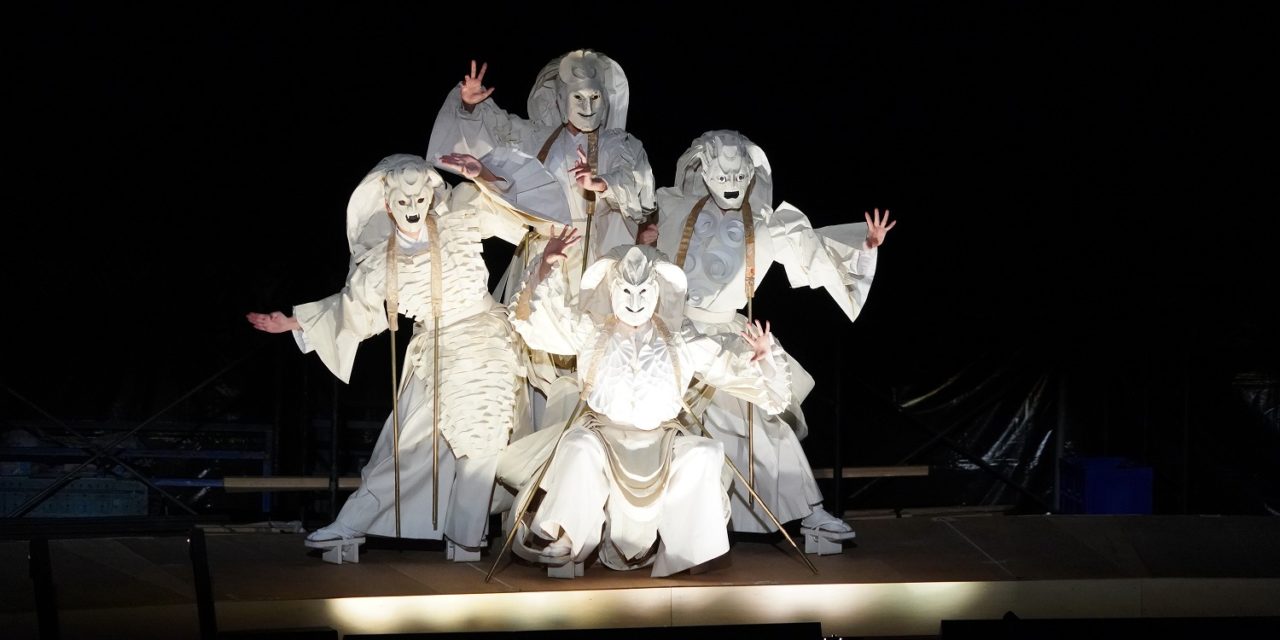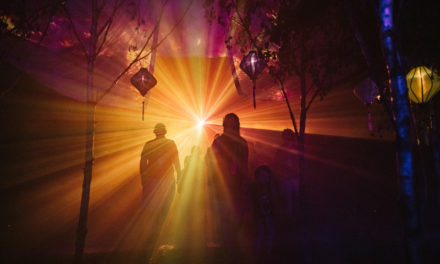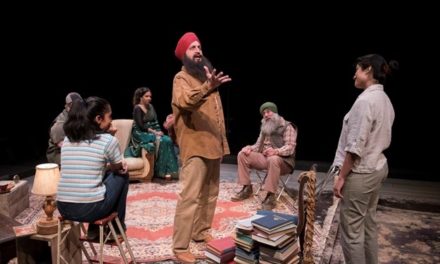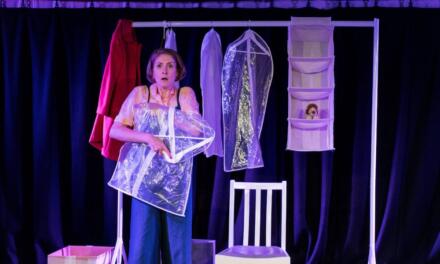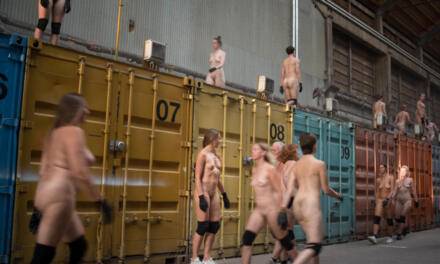World Theatre Festival Shizuoka is one of Japan’s three major annual performing arts festivals, along with Festival/Tokyo and KYOTO EXPERIMENT. For ten days every year, this festival is gathering together international theatre creators in the stimulating environment provided by SPAC, the Shizuoka Performing Arts Center.
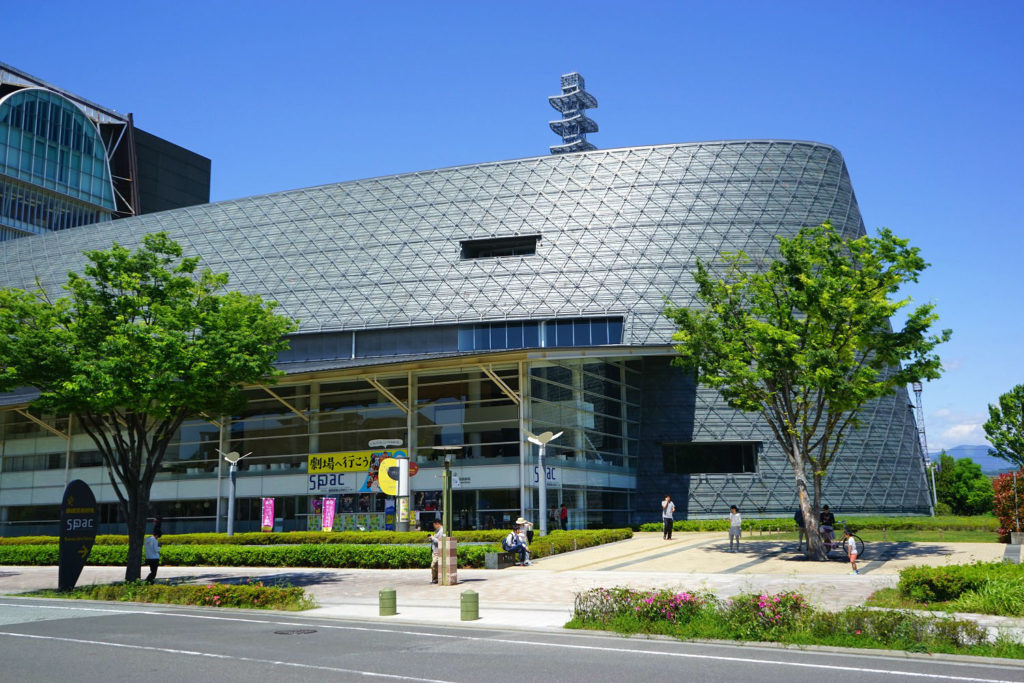
SPAC, Shizuoka Performing Arts Center
At its 19th edition in 2018, World Theatre Festival Shizuoka was held between April 28th and May 6th, a period that coincides in Japan with a series of national holidays. This made it possible for theatre lovers from all around the country to gather in Shizuoka, a city that is otherwise sought for its great views of Mt. Fuji and excellent green tea.
The theme of this year’s edition was “Reaching out to the world through theatre” As festival director Satoshi Miyagi stated in his opening word, in our present world which is oversaturated with means of communication, true dialogue is really scarce. This year’s World Theatre Festival Shizuoka tackles this reality, suggesting theatre as a medium for communication.
World Theatre Festival Shizuoka–Engaging Audiences through Pure Theatre
What distinguishes World Theatre Festival Shizuoka from other theatre events held in Japan is its focus on “pure theatre” as opposed to performing arts that tend to transgress the boundaries of the art.
The strong belief in the potential of pure theatre can be traced through the entire concept of the festival, including the artist line-up and the program. The artists featuring in the program each have their own individual style, which is shaped by their own personalities, by their formation and also by the social environments where they live and create. In other words, for the festival audiences, each of these artistic styles opens a door to a different world.
The focus on “pure theatre” might also explain the popularity of World Theatre Festival Shizuoka. Theatre lovers seek this festival especially for its laidback atmosphere, which is like a breath of fresh air in the tense, rapidly changing and overall extremely hectic world of Japanese contemporary theatre.
This year’s program included eight performances by Japanese and international creators, along with sixteen off-stage performances which were held within the project titled “STRANGE SEED”. For a detailed introduction to the program of World Theatre Festival Shizuoka 2018, please refer to our previous article introducing this event: World Theatre Festival Shizuoka 2018: Reaching Out To The World Through Theatre
Immersing in Theatre for a Day in Shizuoka
With at least two stage performances and several other smaller scale acts going on the same day, there was no better way to enjoy this theatrical cornucopia than by stage hopping–going from one venue to another and watching one performance after the other, fully immersed in the magic of theatre from noon until night.
That is exactly what I did on May 4th when I joined the jubilating audiences of World Theatre Festival Shizuoka 2018. Having reached the city shortly before noon, I was able to watch three performances very different in scale and scope from one another, an experience that only a festival can provide.
Simulacrum–Acting and Activating Memories through Dance
Performed on the stage of the Shizuoka Performing Arts Center, Simulacrum is a work whose purpose and means of expression are one and the same: dance. Performed by Japanese flamenco dancer Shoji Kojima and Argentinian dancer Daniel Proietto, under the direction of Norwegian choreographer Alan Lucien Oyen, Simulacrum is an international production that took seven years of cooperation, dialogue, and workshops to make.
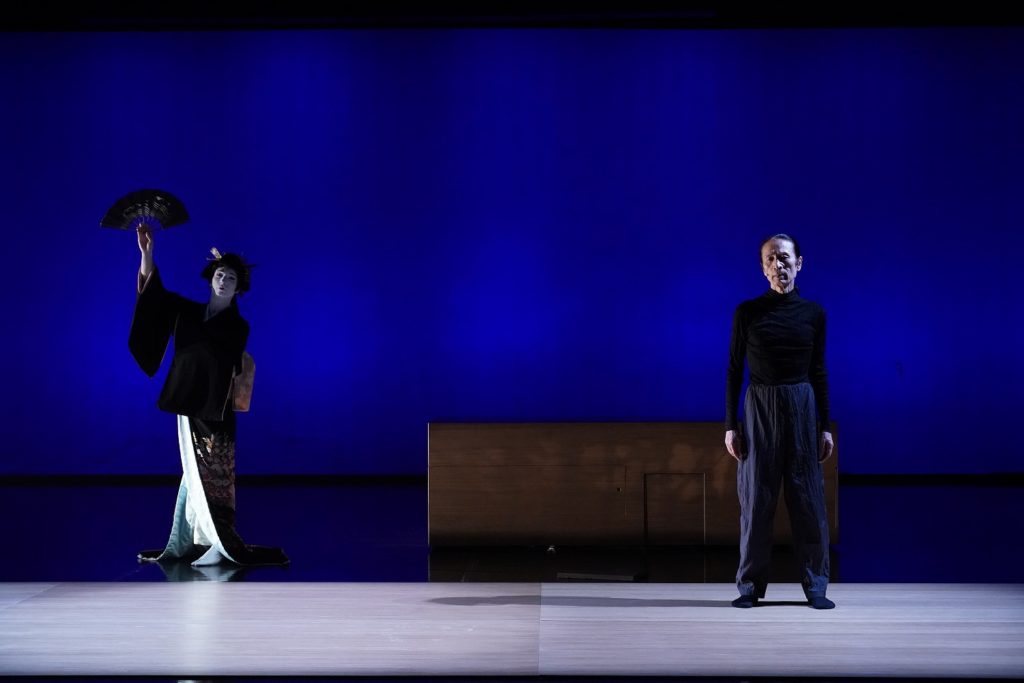
Shoji Kojima and Daniel Proietto in Simulacrum ©Yasuo_Inokuma
Daniel Proietto has been learning and practicing Nihon buyo, Japanese traditional dances that have a strong pantomimical component. Simulacrum is all about Proietto and Kojima exploring one another’s emotional worlds and cultures through the means of dance: Nihon buyo on the one side, and flamenco on the other side. This acting (and activating) of memories through dance results in two stories that are interwoven, unfolding gracefully and rhythmically right before the eyes of the audiences.
The two performers interact in three languages–English, Japanese, and Spanish, just like they most probably do in real life. It’s a “listening comprehension” exercise for the audience who is challenged this way to understand the need of not being confined or restricted to one language, the need to become a new self in another language.
Through the means of dance, the audience gets to know the stories of the two characters who are willing to add a new dimension to one’s self by incorporating the language and the dance traditions of another culture.
Tour--A Bittersweet Reminder that Life Is a Journey
From the “STRANGE SEED” program, I was able to watch Tour, a play by mamagoto, a Tokyo-based company that has been gathering a great deal of attention in recent years for their highly original use of language and of unconventional spaces.
Tour was performed outdoors, in the plaza in front of Shizuoka City Hall. The setting consisted of a tent that had been set up a bit higher on the stairs and a car positioned between the audience and the busy avenue in the background.
The two main characters interact with each other using truncated sentences or individual words that don’t quite become sentences. However, they each have their own reasons for speaking like this. On the one hand, there’s Haru, a Japanese woman traveling aimlessly around the country. We learn about her eventually that she had lost her child recently. On the other hand, there’s Dong, a Chinese rock star who came to Japan to perform at a music festival but got lost from her band. We realize she is Chinese by the way she speaks. There is no other mention of her nationality.
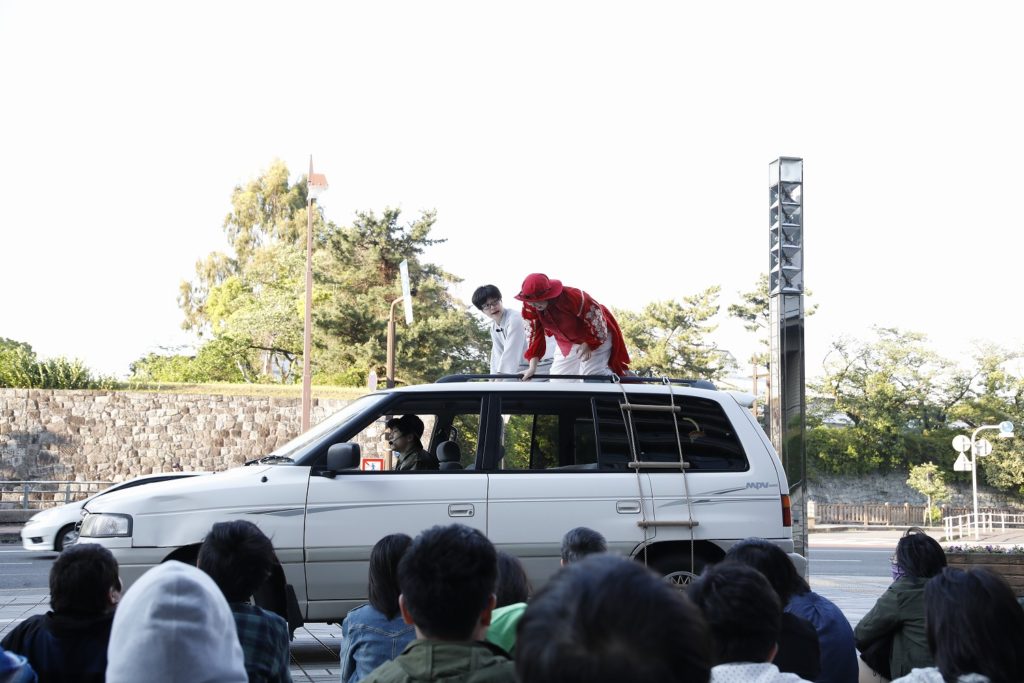
STRANGE SEED: mamagoto Tour © Mayuko Yamaguchi
Haru tries to help Dong but they both end up getting lost together in the woods. Even by using just truncated words, the two manage to get along and learn more about one another. Though their dialogue started out with Haru wanting to help Dong, she ends up being cheered up by her new friend who reminds her that life is a journey full of unpredictable happenings.
Their communication emerges in spite of the words not being able to fulfill their function properly–in Haru’s case because of trauma, and in Dong’s case, because she speaks a foreign language.
Tour hints at the possibility of intercultural communication that relies on something deeper than the words themselves, namely openness and the desire to understand the other by listening carefully to what they have to say.
Mahabharata – Nalacharitam— A Painted Scroll Comes to Life
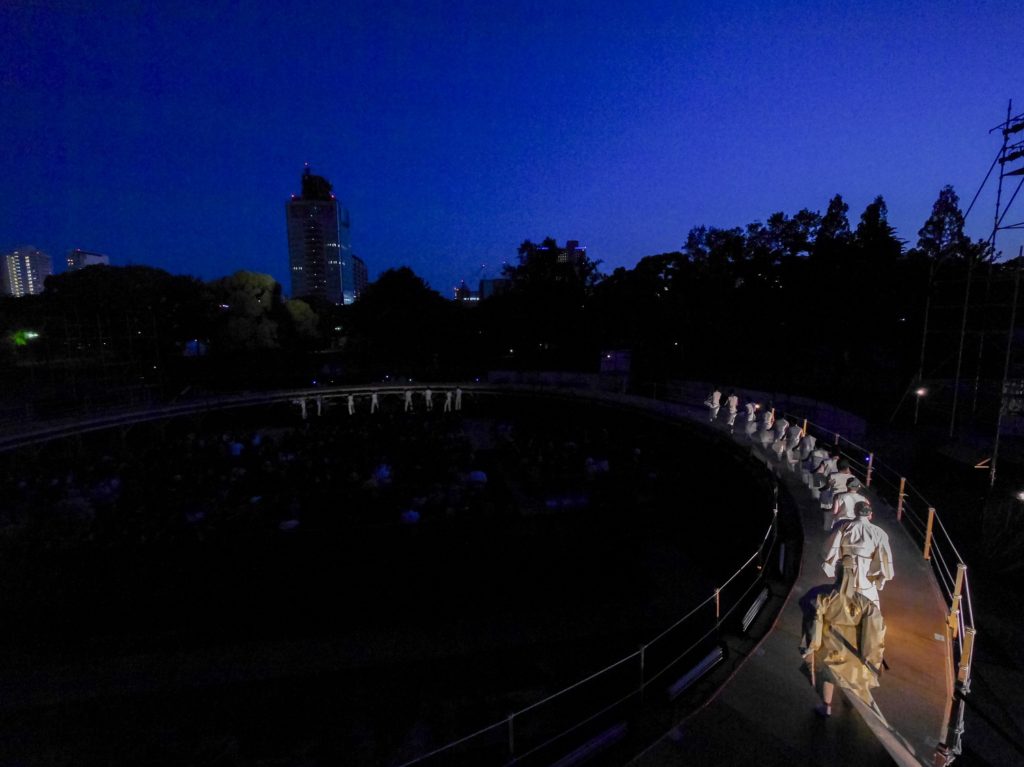
SPAC, Mahabharata – Nalacharitam © Yasuo Inokuma
Mahabharata – Nalacharitam, directed by Satoshi Miyagi, is one of the signature performances in the repertory of SPAC. It was performed at Shizuoka’s Sumpujo Park on a circular stage that surrounded the audience seats.
Centered on the story of King Nala and Queen Damayanti from the Mahabharata, SPAC’s Mahabharata – Nalacharitam is a performance that takes the audience into the playful world of legend and myth where the rules of everyday language and behavior are suspended.
On the narrow, circular stage, surrounded by the trees in the park and watched over by the starlit sky, the story is unfolding just like an old painted scroll from ancient times. Moreover, it seems to be teaching the audience the particular vocabulary of the story–through each and every scene.
For each role, there is an actor and a chorus of narrators. It is the chorus or the narrator who tells the story and voices out the words of the characters, a feature that can often be seen in Asian traditional performing arts, Noh theatre or the Japanese puppet theatre being just two examples.
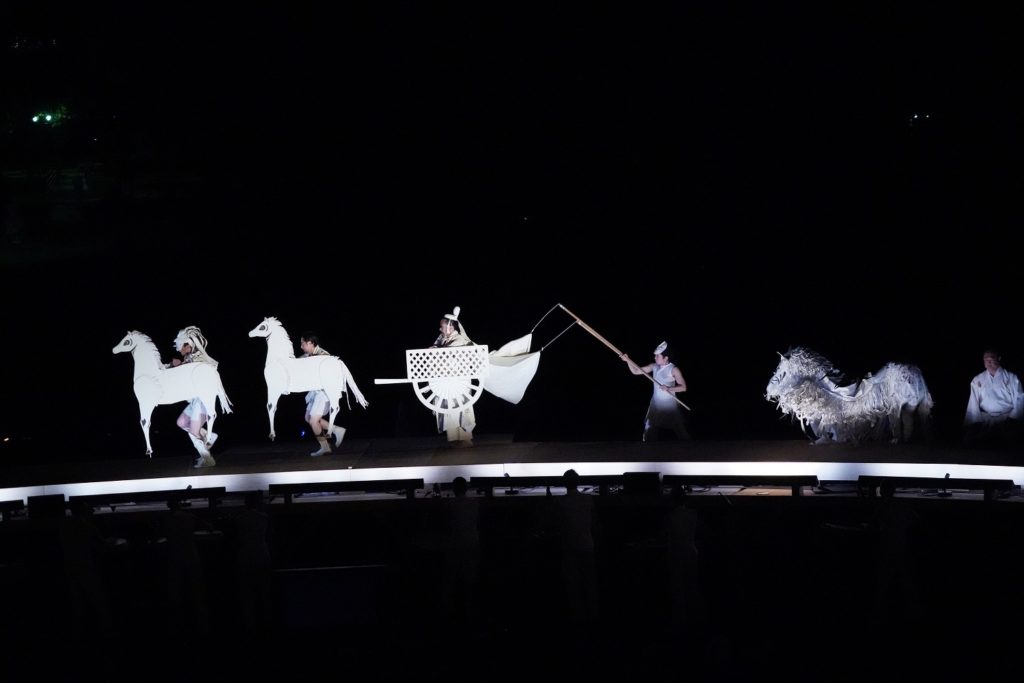
Mahabharata – Nalacharitam © Yasuo Inokuma
A particularly strong presence was exerted by music, performed live by a group of percussion instrument players. The rhythmical music creates the background and sets the tempo for the charming story of the two lovers who are separated and reunited after harsh trials.
Performed with wit and playfulness, Mahabharata – Nalacharitam is a jewel of theatrical inspiration, enchanting a wide audience of all ages. It is a work that teaches you how to look at it while unfolding on the stage before your eyes.
European audiences will be able to see Mahabharata – Nalacharitam this year in La Villette, Paris (November 19th – 25th). In fact, from September 20th through October 20th, the SPAC theatre company will be performing at Théâtre national de la Colline in Révélation, a play by Léonora Miano.
World Theatre Festival Shizuoka – The Power of Pure Theatre to Reinvent our Dialogue
World Theatre Festival Shizuoka 2018 had a powerful line-up of artists that challenged audiences to suspend their usual understanding of the world and to reconstruct it with each new stage performances they watched. By watching a series of performances at this festival, the viewers most probably experienced a process of reinventing the way they look at the world. This is how I’d explain the joy I saw in the eyes of the members of the audiences in Shizuoka.
Festivals are by definition a time of celebration, a disruption of the routine. Through its theme and program, which was compact and intense without being overwhelming, World Theatre Festival Shizuoka 2018 was a true celebration, providing audiences with precious encounters, with cultural insights, and with opportunities of self-renewal.
This post was written by the author in their personal capacity.The opinions expressed in this article are the author’s own and do not reflect the view of The Theatre Times, their staff or collaborators.
This post was written by Ramona Taranu.
The views expressed here belong to the author and do not necessarily reflect our views and opinions.

